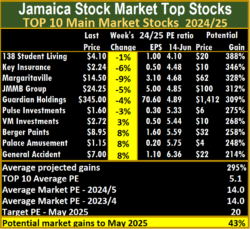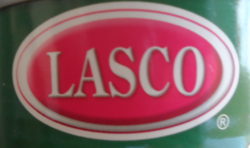The trade deficit for the first two months of this year widened despite exports growing faster than imports. The deficit was US$827 million compared to US$755 million in the similar 2012 period. Imports rose 12.5 per cent or US$127 million to US$1.148 billion from the same period in 2012. The bulk of the increase was occasioned by US$98 million rise in chemicals.
Exports | Grew faster than imports at an increase of 21.2 percent which generated US$321 million inflows, an increase of US$56 million. Mining and quarrying accounted for major part of the increase. But manufactured goods, which fell by US$23 million, prevented a steeper increase in export earnings. The decline may well be a timing difference relating to shipment of sugar which is mostly exported in the early part of the year. Statin, who released the report, did not say which items resulted in the decline in manufactured goods. Investigations done by IC Insider confirms that in 2012 the sugar industry exported 40,000 tonnes of sugar between January and February at a value of US$37.5 million and this year only 19,130 was shipped in the same period with a value of US$16.6 million, a difference of US$21 million.
 Imports | While imports rose, not all major categories rose as some items fell. Imports of Chemicals rose by US$178 million to US$276 million, due to higher imports of ‘Organic Chemicals’, ‘Plastic in Non Primary forms’, and ‘Medicinal and Pharmaceutical products’. “Food” increased by US$26 million to US$174 million up by 17.3 per cent. “Machinery and Transport Equipment” increased by US$5.7 million or 3.9 per cent to US$153 million this period. “Mineral Fuels, etcetera” fell by US$89 million or 21.1 per cent and was valued at US$333 million. “Manufactured Goods” also declined by US$3.5 million or 3.5 per cent, and was valued at US$95 million down from US$99 million recorded in the comparable 2012 period.
Imports | While imports rose, not all major categories rose as some items fell. Imports of Chemicals rose by US$178 million to US$276 million, due to higher imports of ‘Organic Chemicals’, ‘Plastic in Non Primary forms’, and ‘Medicinal and Pharmaceutical products’. “Food” increased by US$26 million to US$174 million up by 17.3 per cent. “Machinery and Transport Equipment” increased by US$5.7 million or 3.9 per cent to US$153 million this period. “Mineral Fuels, etcetera” fell by US$89 million or 21.1 per cent and was valued at US$333 million. “Manufactured Goods” also declined by US$3.5 million or 3.5 per cent, and was valued at US$95 million down from US$99 million recorded in the comparable 2012 period.
Traditional Exports | This segment earned US$139 million during 2013 period, a decrease of 3.4 per cent, or US$5 million, due to the decline in earnings from “Manufactured Goods” which fell by 48.6 per cent from US$48 million to US$25 million. There was an increase in “Agriculture” earning US$3.4 million, 73.2 per cent above the US$2 million recorded in 2012. “Coffee” was the commodity which contributed to the overall increase in this category. “Mining and Quarrying” rose by 17.9 per cent, or US$17 million to US$111 million. Alumina earned US$90.3 million, moving up from US$74 million in the comparable 2012 period. “Bauxite” earnings grew by US$1 million or 4.4 per cent to US$21 million.
Non-traditional | Exports of non-traditional commodities earned US$170 million due largely to increases in the groups “Food’, and “Other Non Traditional Exports”.












